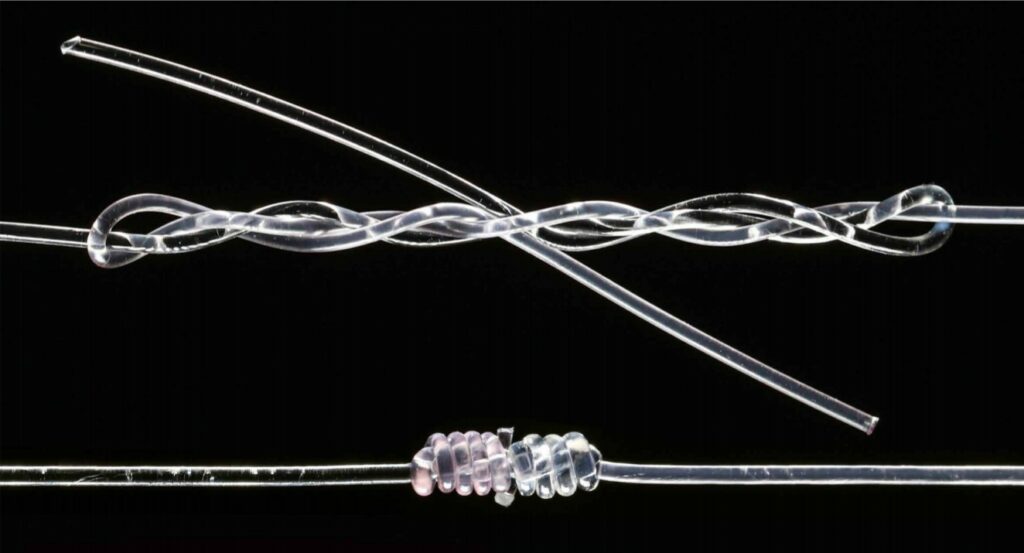
Excited for the dawn of each day, as fishermen were always innovating and adapting rigging techniques to beat fish with the greatest efficiency and consistency. Whether we are catching bait or blue marlin, advancements in tackle and technology continue to offer an unfair advantage. Yet considering the many variables we have no control over, tying reliable knots and creating fortified connections rests at our very own fingertips. Trolling dink ballyhoo has proven to be one of the most effective methods of catching billfish anywhere in the world. Whites, sails, stripes and blues all fall to the delicate presentation, but particular fisheries demand a different approach altogether. During the coming months, the waters off Miami and the Florida Keys provide one of the most exciting and accessible domestic fisheries. Off Key West, it an east wind against a current that is flowing from west to east that creates tailing conditions and brings sailfish to the surface. Here, cobalt blue water of the Gulf Stream mixes with green water from Florida Bay to create a powder blue paradise where sight casting to migrating sailfish proves to be the most exciting and effective approach. The formation of ideal conditions can vary greatly depending on location, but the parallel is wind and swell pushing against the current. Tailing sails can travel by themselves, but I have seen as many as 20 fish swimming together. Making the cast easy for anglers is critical as extra-long casts usually result in baits flying off the hook or not reaching their target. If you get too close to the fish, then you risk spooking them. In this fishery we may scale down to as light as 16 lb. mainline and 20 lb. fluorocarbon leader. Although a double uniknot is a very suitable connection, it is bulkier than other options. The seated knot also positions tag ends where they can catch guides on the cast and retrieve. A Bimini twist and no name knot provide increased knot strength and chafe protection when attaching mainline to leader material, but when playing fish with light drag a double line isnt necessary. The simple blood knot is possibly the cleanest and most elegant fishing knot in existence, with tag ends that can be trimmed as tight as possible without risk of slipping. And a properly tied five turn blood knot retains approximately 80 percent of the line stated breaking strength, which is far superior to a surgeon knot. Popular with fly fishermen who create custom tapered leaders, the blood knot self tightens when loaded and is also highly valued in big game fisheries when anglers need to connect mainline and leader of similar diameter. Another great use for a blood knot is to quickly splice parted line or remove a section of abraded monofilament. Regardless of application, preserving maximum tensile strength is in direct correlation to the number of wraps used for a particular line class. Light line below 30 lb. excels with six wraps, while 50 lb. seats perfectly with five wraps. Too many wraps wont allow the knot to cinch fully and too few wraps could result in the knot slipping. With experience youll learn the blood knot specific tendencies regarding particular brands of line, the number of wraps used and even the way tension is applied.
How To
1. Overlap the two lines to be spliced together by about eight inches, with tag ends facing opposite directions. 2. Start by wrapping one tag end around the other standing line four to six times. 3. Feed the tag through the gap formed by crossing the two lines. 4. Repeat the process with the other tag end. 5. The two tags should project through the open loop in opposing directions. 6. Moisten the line with saliva and keep the knot a bit loose while pulling both working ends, alternating with gentle pulls on the tags. When youre ready to snug it down, quickly apply equal pressure to the standing lines. The knot will compress while redistributing the twists, creating two short sections of wraps butted up to each other. 7. Make certain wraps are uniform, then trim tags with nail nippers. Have confidence in your abilities and dont be afraid of trimming flush to the knot.













